My grandfather once owned an apple orchard in western Washington.
One thing I remember him telling me is that apples (Malus domestica) are common there because of the abundant rain and cold winters.
These factors cut down on costs, as irrigation or forced dormancy was usually not needed.
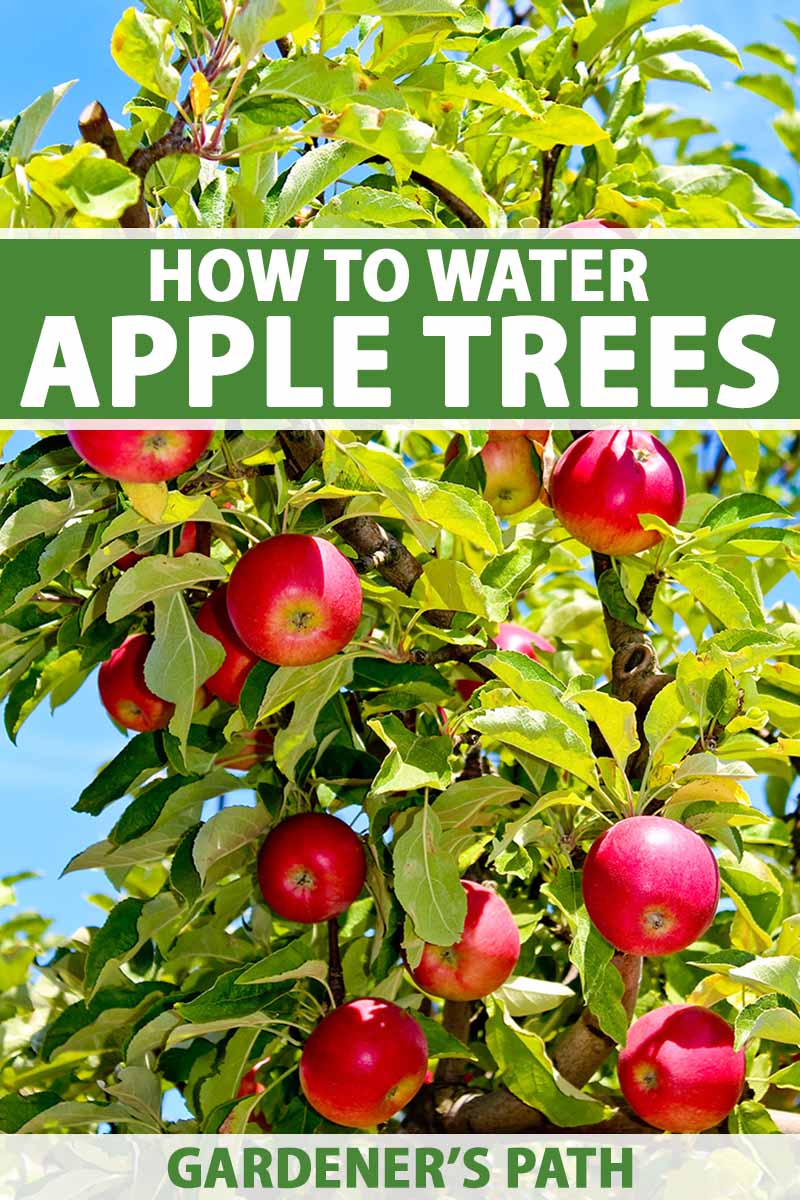
We link to vendors to help you find relevant products. If you buy from one of our links, we may earn a commission.
Apple trees, like all plants in the landscape, require regular watering to ensure healthy growth.
To help you take care of your specimens, here are some guidelines on how to properly water them. With these tips, you can ensure your trees remain healthy and productive for years.
It’s important to remember that all fruit tree species require a different approach to irrigation.
Apple trees can have different water needs at certain times of the year, especially if there are particularly rainy seasons in your region, so you need to be mindful of this.
In our guide to growing apples, we cover how to cultivate these trees in your landscape.
In this article, I’ll discuss the best practices for irrigating your M. domestica so you can keep it healthy and fruitful throughout its lifespan.
What You’ll Learn
Understanding Water Requirements for Apple Trees
Apple trees require water to thrive and produce delicious, juicy fruit. Without adequate irrigation, they will be less productive and in the case of extreme drought, may even die.
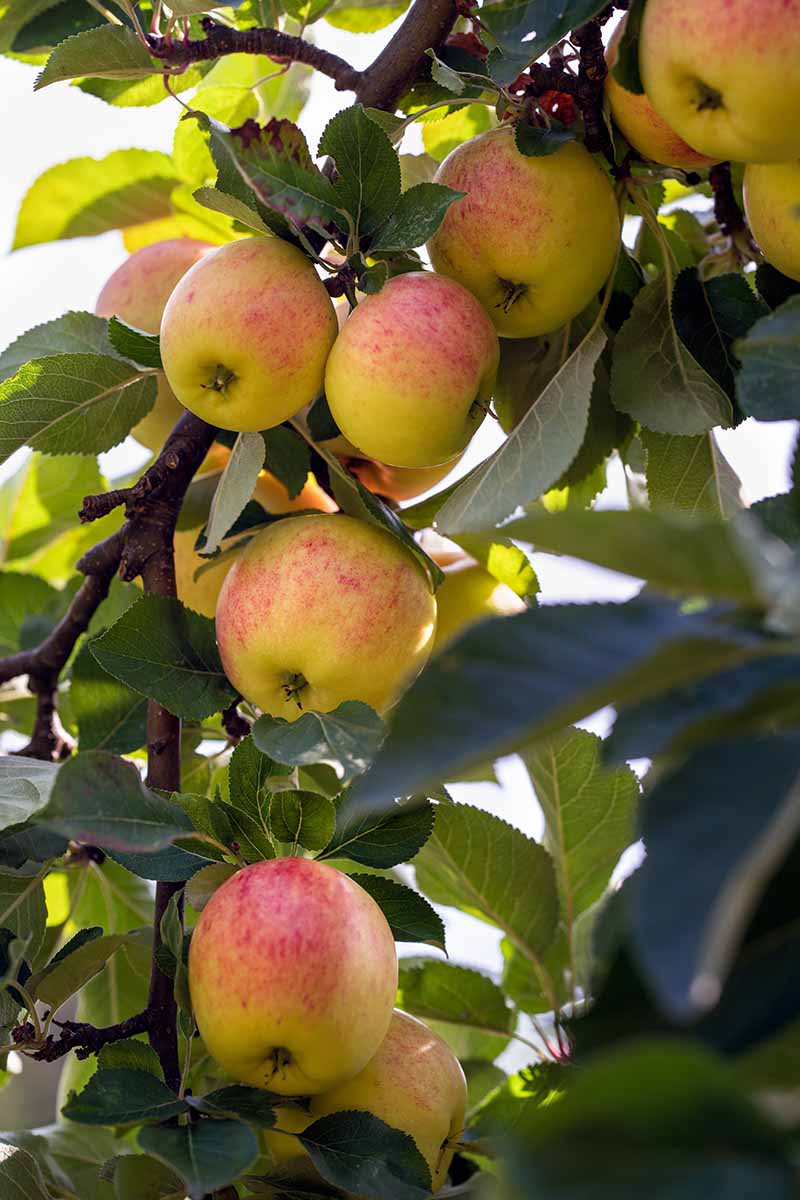
The amount of water a plant requires depends on several factors, such as the type of soil, the size and age, how much sunlight it receives, and the climate in which it grows.
The faster the soil drains and dries out, the more often your trees may need water.
Additionally, during hot summer months, they will require more frequent watering than in cooler months.
The amount of rainfall your region receives will affect how much supplemental irrigation you need to provide.
Large, established specimens with extensive root systems will be better able to withstand periods of dry weather than young ones.
As a rule of thumb, mature specimens require an inch of water per week during the growing season for optimal health and fruit development.
Young saplings will benefit from slightly more – up to two inches a week.
You can use a rain gauge to determine whether or not rainfall is sufficient, and if it’s not, you’ll need to provide supplemental irrigation.
Selecting the Right Watering Method
Caring for your apple trees doesn’t have to be complicated. Once you know what you need, it can even be extremely simple.
That said, a proper watering method is key to ensuring your M. domestica plants are receiving adequate moisture.
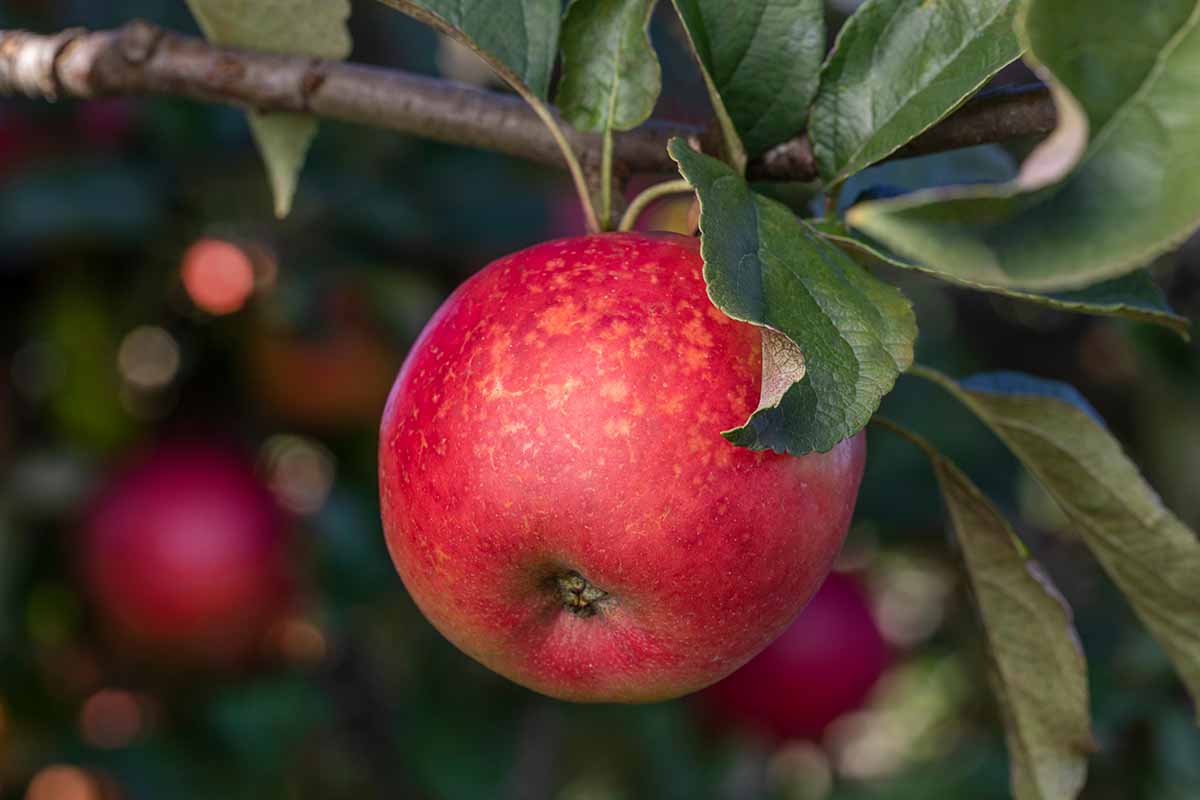
For young specimens, it’s important to water deeply and slowly so that the soil can absorb as much moisture as possible. This helps to prevent runoff, particularly if the soil has dried out.
Young trees are more susceptible to water-related stress than established specimens, so it is important to use caution.
If you live in a dry area or experience a long drought, increasing watering frequency or duration may be necessary.
You are typically in a better position if your tree gets too dry and starts to wilt than you are if you water too much, which can waterlog the roots.
In addition, applying a layer of mulch around the base of your plants will help retain soil moisture during dry periods.
You should irrigate mature apples less frequently but with more water than young ones require. Younger plants need consistent, even moisture.
You shouldn’t overwater, not even in a drought. Waterlogged, drowning roots will cause more stress and damage to growth and production than dry, thirsty roots.
Depending on the size of your orchard and the number of trees you are growing, you can choose to water manually using a garden hose or install a more permanent irrigation system.
When to Water
The frequency and duration of watering sessions are both critical for health and growth of your apples. And keeping the soil moist but not too wet is important, as overwatering can lead to root rot.
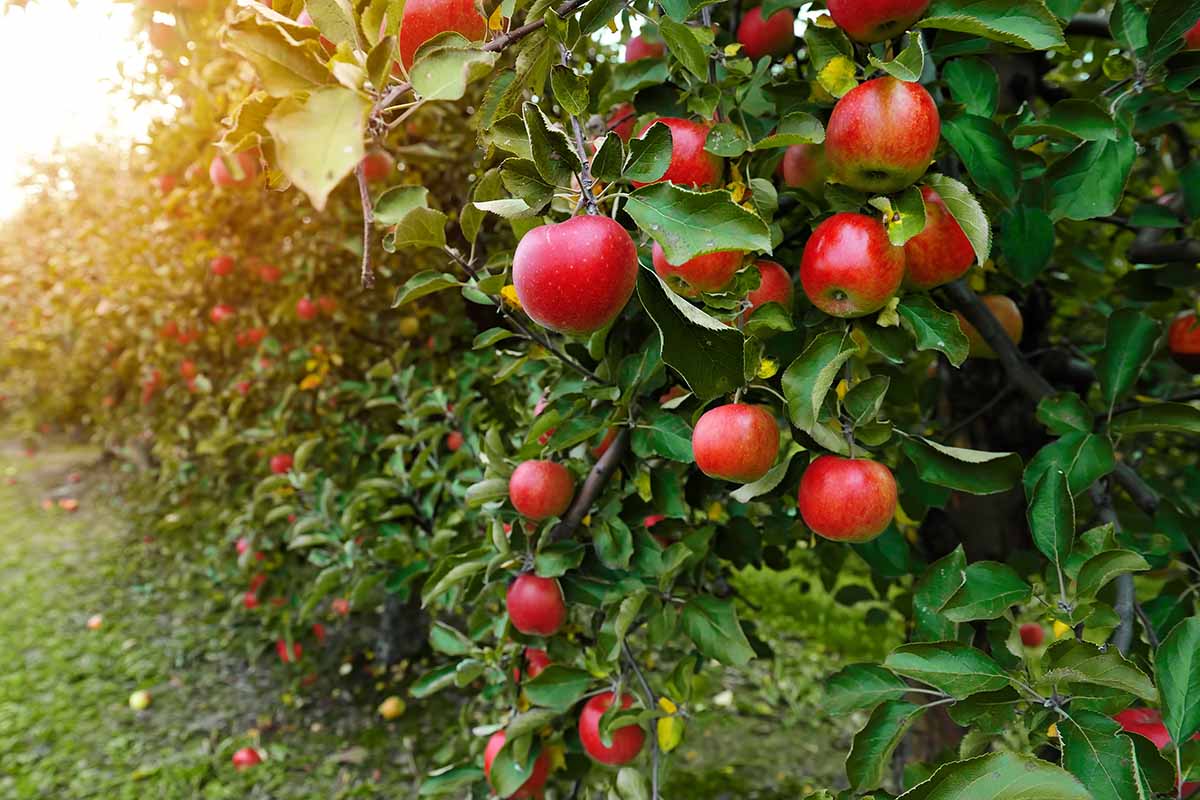
Generally, you will want to water once every seven to 10 days during the spring and summer when temperatures are warmest. But in areas with frequent rain, you may not have to water at all.
Roughly an inch of rainfall or water provided via supplemental irrigation every seven to 10 days is enough to keep an established specimen healthy from May through October.
Additionally, you should apply water evenly throughout the root zone. This means irrigating at the base of the trunk and out to the dripline.
Your apple tree will often receive enough water naturally in fall and winter, but may still need supplementation if it is especially dry.
During the winter, the best time to water is as early in the day as possible, when temperatures are above 40°F and there is no snow or ice on the ground close to your trees. This will ensure the roots have time to absorb the water before the temperature drops at night.
If you would like to learn more about care and management during the winter, be sure to read our guide on apple tree winter care.
Monitoring Soil Moisture Levels
Monitoring the soil moisture levels around your apple trees is essential.
Soil types vary in their ability to retain moisture – fast-draining soils will dry out more quickly than those with a higher percentage of clay, for example.
To monitor the soil moisture levels, use a simple moisture meter to measure the relative humidity in the ground around the base of the specimen.
For a complete breakdown on how to use a moisture meter, check out our handy guide.
It’s important to remember not to overwater as in many cases this can cause more damage than underwatering.
If the soil becomes waterlogged, the roots stop expanding, minerals are not absorbed, the leaves turn yellow and stay small, and eventually the roots start to rot and die.
In addition, soggy conditions can be an ideal breeding ground for disease-causing pathogens.
Take a look at our guide on managing root rot to learn more.
Water early in the morning so that any excess moisture has time to evaporate before nightfall. This will help keep mold and fungi at bay while also helping to avoid root rot due to excessive amounts of moisture.
Monitoring your apple trees closely will help you provide them with enough moisture without causing any damage.
Cultivating an Oasis for a Thriving Existence
To ensure that your apple tree is getting the best care possible, it’s essential to understand how to water it properly.
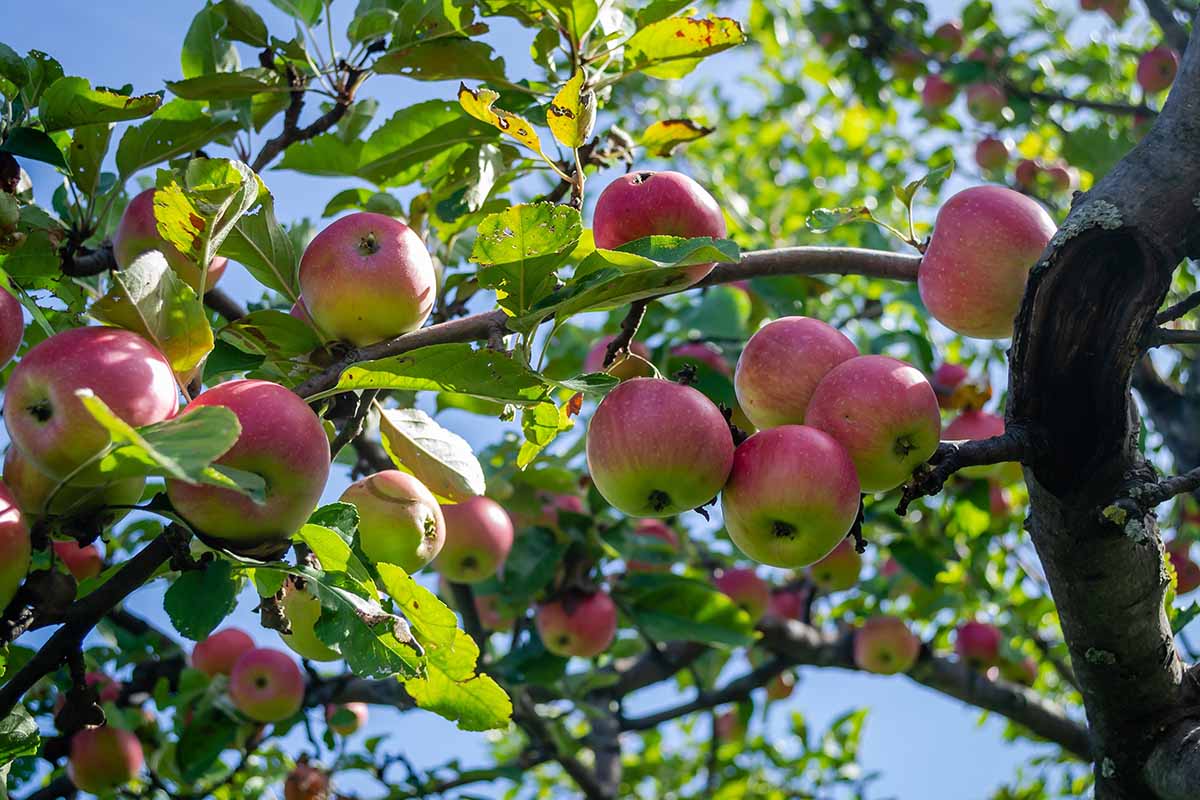
When watering, make sure to do so in the morning and if you have multiple specimens, use an irrigation system to provide enough water for their needs.
With these steps, you can help ensure your tree will stay healthy and produce delicious fruit. What is your irrigation system like? Let us know in the comments section below!
To learn more about managing your apple trees, check out these guides next:
All very good information, but did not answer my need to know what type of irrigation application is best here in the Pacific North West…Are typical lawn sprinklers that soak the tree ok to water espalier style cosmic crisp?
Watering with sprinklers can result in a significant loss of moisture since a lot of the spray goes into the air and potentially onto tree trunks rather than being directed towards the root zone. Inadvertent splashing can also sometimes carry soilborne pathogens to places where you don’t want them. This type of irrigation can work if you’re able to run the sprinklers for long enough to give the trees a good soak as needed, but other modes of watering such as using soaker or drip hoses are often recommended for cultivating fruit trees regardless of the style or cultivar.